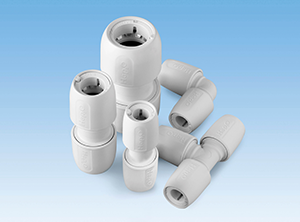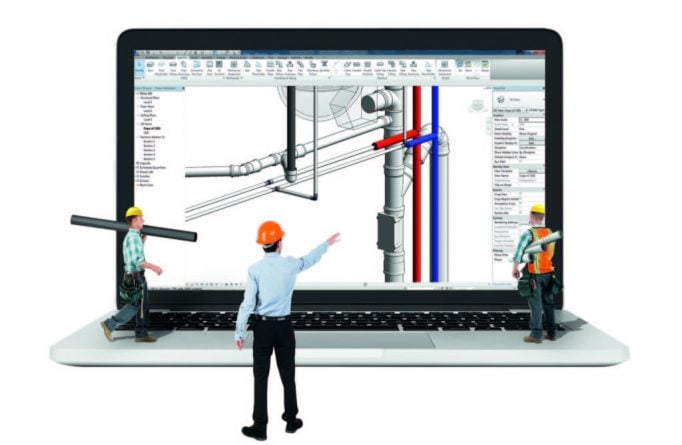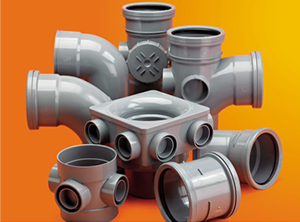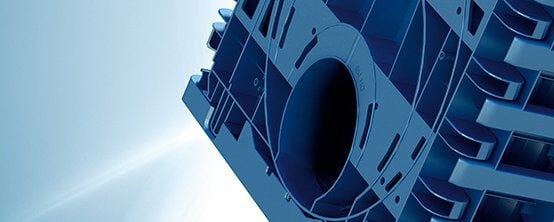Better sanitation and hygiene – smart infrastructure networks
Sanitation is an urgent problem, especially with the sprawling, rapidly expanding urban areas across the globe. By 2050, approximately 2.5 billion people will migrate to cities in the developing world – primarily in Africa and Asia. In 2018 alone, 4.5 billion people in the world (that’s 61% of our global population) have inadequate and sub-standard access to safely managed sanitation services. Sanitation and hygiene are critical for health and economic growth and overall productivity, which is why urban sanitation has become a global priority. And forward-thinking people like Ariel Stern, CEO and Co-Founder of Ayyeka Technologies in Israel, offer next-generation IoT and remote monitoring solutions that enable the creation of cyber-secure, smart infrastructure networks – to help mitigate challenges like wastewater management – a challenge that Wavin knows only too well.

Ariel Stern – Connecting decision makers in critical infrastructure to their networks, so they can make better and timely decisions.
Ariel Stern, an electrical engineer by profession, is the CEO and Co-Founder of Ayyeka Technologies, which offers next-generation IoT and remote monitoring solutions that enable the creation of cyber-secure, smart infrastructure networks.
Ayyeka is at the forefront of bringing together cloud-based software and plug-and-play hardware data creation and collection technologies to serve the Industrial Internet of Things (IIoT) market. Using Ayyeka's technology, field data is seamlessly delivered to decision-makers in order to optimize resource efficiency, enhance compliance and monitor the real-time status of critical infrastructure.
Critical to the prevention of public health and safety hazards, smart, real-time wastewater management includes monitoring water levels to prevent pollution and costly sewer overflow, identifying the presence of corrosive gases before they damage infrastructure, identifying pump failures and pinpointing other emergencies at lift stations and elsewhere.Ayyeka Technologies
Case in point
To better understand the work of Ayyeka, let’s have a look at one of their flagship cases: the city of Cincinnati (Ohio, United States). This city suffered from extended challenges related to wet weather management and sewage overflow (combined sewage in the Ohio river). One option was to build bigger pipes and extend the treatment plants' capacity, but that path would have taken years, and was extremely expensive and complicated from the design and construction perspectives. The second option was to use their existing sewer system better. But in order to do that, a technology solution for the effective creation and management of field data was needed. They meet Ayyeka at the right time and Ayyeka offered them the missing technology piece there were after.
With IoT, they increased the capacity of the network and lowered their cost of operation (waste water treatment). They measured rain events and the level and flow in the pipes, taking real-time decisions on how to divert the water. With that insight they now open and close the gates and valves to direct flows to where there is sufficient space.

Change is relative
Utility is a critical infrastructure that is aging, mostly offline (<1% of the remote fixed assets in the network are connected), strongly regulated and stressed (climate change, urbanization). The utility/infrastructure industry has not been digitally connected for decades. It is all about how this industry engages with time and there is a difference between US and Europe. Not everything can be measured or engaged in quarters. The utility space moves in years, not in quarterly manners. Like Wavin, it takes years to bring a new solution to market. Wavin is 65 years old and is still growing. The process from Wavin also didn’t happen overnight (starting with drinking water pressure pipes). Utility is not just a conservative market, but its business just takes time: budget cycles, procurement cycles, political forces. They are moving – but in their own pace.
I personally am from a different generation; I move faster in many manners, dive into my Inbox every two minutes. But I learned to change perspective. It has been difficult for me, as a young Israeli guy. But I have some older, trusted advisors and colleagues now around me who say: Ariel, big things in life take time to build. I am ok with that pace now. I have grown to like the utility industry a lot. It’s a small industry but with fascinating people who I meet over and over again. The utility business is a people’s business – business from person to person. In B2B / Utility there are very close relationships. Like me with Wavin. After a very short introduction I was invited to their event, met with the CEO during happy hour in the bar and also met a lot of other people. And we know personal things already about each other. It’s amazing. I like it. The most important thing in life is relationships. Also in business. This drives me in the morning, also inside my own company.

What the industry should do differently
What Ariel’s team has identified is a gap. The introduction phase of a project can run very quickly; it’s easy to run a pilot with companies big or small. But it’s the middle phase (between pilot evaluation and full deployment) where something is missing. There is a gap between what the existing big companies can offer and what younger companies (like Ayyeka) can offer. There is openness with customers to evaluate new solutions also with younger companies, but when a big opportunity develops, they all turn to their current or common suppliers. In a recent example working with Wavin, I was introduced to an opportunity in the Netherlands where Wavin was invited to deliver a smart/digital drainage solution. Although we are specialized in digital assets, the customer still felt more comfortable working with Wavin. Wavin is a Dutch company that will get things done, and is very trustworthy. I understand that 100%. This means that we, as Ayyeka, either need to adapt and work more together with bigger companies like Wavin… or we will need to convince the end customer to pick us as the frontrunner. But we chose the first option to bridge that gap. I think the industry should be more open to work with younger companies, but I understand that it’s not realistic (many rules and regulations). We need to adapt to the industry.
Do not underestimate the efforts and. complexity of making your life comfortable (as they are today). But life is fragile; one big disaster can change everything. Don't take anything for granted. Many talented people in infrastructure dedicate their lives to make your life comfortable. They work 24/7 to realize that. When you go to the toilet and you flush, the bad things go away right? But what if it doesn't go away?Ariel Stern
How to get the end-consumer (city residents) to value the utility sector
In the Netherlands, for example, it’s obvious for people to have running water, sewer and electricity. This is something most of us take for granted. Until something goes wrong (e.g. a flood). With climate change causing a change in weather patterns – and the consequences of that – people are more attuned to the importance of utilities, which is why there is now more focus on investing in utilities. As an example, the wildfires in the U.S. and Australia were partly caused by poor maintenance in the electrical grid. Many of us simply take the utility workers for granted. Until there is a problem. And then, we really appreciate them. In more than one way they are the unsung heroes of our cities!
Smart cities are the future
The term ‘smart city’ is more born from a PR point of view. But what is a smart city? A city full of surveillance cameras (very disturbing idea by the way): is that a smart city? A smart city is a city that is willing to listen, adapt and respond – like, for example, Cincinnati, the city that now has the most sophisticated waste water management system in the US. They don’t have a fancy smart city project. They just do it. Another example is the new Wavin gully. No electronics inside, so is it smart? If you market new solutions with advanced cleaning systems, not from concrete but plastic… that is a smart solution. Smart is the willingness to adapt. It’s not only about digital technology.
Making a difference
Ayyeka is completely opposite to Wavin: it’s digital versus field assets (where field assets like pipes and road gullies have been digitally disconnected for decades). Partnership is the only way forward. For Ayyeka, Wavin was the final pieces of the puzzle. Ariel and his team realized the big companies needed better solutions to connect and digitize their assets: assets from companies like Wavin, but also other key players across the value chain in the water cycle (pumps, pipes, automation, communication, operators). Ayyeka is changing the way people use utilities. They are serving communities and people are happier.
According to Ariel, Wavin and Orbia are doing things right: “You can describe your business in a very dull (dictionary way): pipes, irrigation, fluorine, etc. But you can also describe it differently: our business is embedded in the fabric of civilization. Like at Ayyeka. Yes, we do IoT and many technical things, but we also serve cities like Cincinnati and many others. We are on the right track.”
And that says it all.









